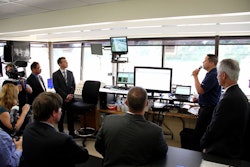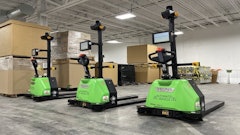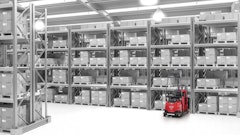Why nearshore to Mexico? The question was one of many addressed during this week’s eyefortransport’s 11th annual North American 3PL Summit, held in Chicago. And today, it is even more relevant as global manufacturers weigh such key factors as shipping lead times and transportation costs and labor rates to identify their next area of global expansion. Evident enough is the shift some manufacturers made in moving production from China to Mexico, such as with Casabella. International fashion company Hugo Boss earlier this year announced its plans to further improve its logistics services in Mexico via its partnership with DHL, i.e., better warehousing, distribution and handling of its merchandise within the country. Electronics manufacturer Avnet Inc. also has a 125,000 square foot facility in Nogales, Mexico and has focused on growing its base within the country. But still, these companies’ actions present just a glimpse of the amount of nearshoring activity that steadily increased over the past few years.
If we look at the numbers over the past decade, the value of U.S. surface transportation trade with Canada and Mexico, the United States’ North American Free Trade Agreement (NAFTA) partners, increased by 83 percent in 2011 when compared to September 2001. While economic factors and other variables do play a key part in activity volumes, trade using surface transportation between the U.S. and Canada and Mexico was still 13.8 percent higher in September 2011 than in September 2010, according to U.S. Department of Transportation’s Bureau of Transportation Statistics (BTS). Year to date (YTD) U.S. trade in goods with Mexico valued at $73,490.80 million in exports and $ 91,041.9 million in imports, according to the U.S. Department of Commerce’s U.S. Census Bureau. Helping to grow those numbers include such service and solutions providers as Jesta I.S. Inc. (signed a strategic alliance with Deloitte in 2011 to cover the Latin American market); Exel (opened its distribution center in Laredo, Texas in Q4 of 2012); and Con-way Truckload and Con-way Multimodal (subsidiaries of international multi-modal service provider Conway Inc.) which launched a new product earlier this year to provide added service for U.S.-Mexico shipping.
While modal segments such as rail and trucking in Mexico are still a largely privatized environment today, nearshoring does create an important indicator of how such changes may affect the third party logistics (3PLs) providers. For example, relevant still today are challenges with getting product from point A to point B in Mexico. Add to that the major risks with regards to safety and security—not just of manufactured goods during transport but in Mexico-based DC’s and warehouse—which exist and in some cases, remain at the top of the list for why some global companies may choose not to expand to Mexico or have a LATAM presence. Nonetheless, perhaps the more relevant message here is to do your research before writing off a possible market expansion opportunity based merely on unsubstantial evidence.
“There hasn’t been a revolution in Mexico—there has been a change in government,” explained Erik Markeset, President, CSCMP Mexico and Principal of Tsol Co., in describing the coming together of the country’s right wing, left wing and presidential parties. This may be just one of the many possible factors which underline the number of U.S. companies coming into the U.S. but growing their offices in Mexico as well. Labor-, energy- and telecommunications reform in Mexico also create opportunities. But regardless of the opportunities that nearshoring creates, companies must evaluate all the factors to determine if the move to Mexico is right for them. Below are a number of tips and strategies shared at the 3PL Summit in Chicago when nearshoring to Mexico.
- The benefits of nearshoring are most evident when a company’s customers have high demand that can be met within a short amount of time
- Nearshoring creates an opportunity for shortened lead times significant of similar time zones
- Identify your variables: “Just because you’re in a different location does not mean your process has to be more difficult/as difficult as it seems,” said Robert Brenner, Senior Vice President, Warehousing and Distribution, Avnet Inc.
- Utilize “shelter programs” when doing business globally to mitigate liabilities, workforce issues, HR-related matters, etc.
- Find the right plant manager at all costs when expanding globally
- Protect your companies in new global regions not just physically but intellectually via a number of strategies and sources—don’t rely on one method
- Establish your inventory tracking strategy immediately to avoid potential fines















![Pros To Know 2026 [color]](https://img.sdcexec.com/mindful/acbm/workspaces/default/uploads/2025/08/prostoknow-2026-color.mduFvhpgMk.png?ar=16%3A9&auto=format%2Ccompress&bg=fff&fill-color=fff&fit=fill&h=135&q=70&w=240)





